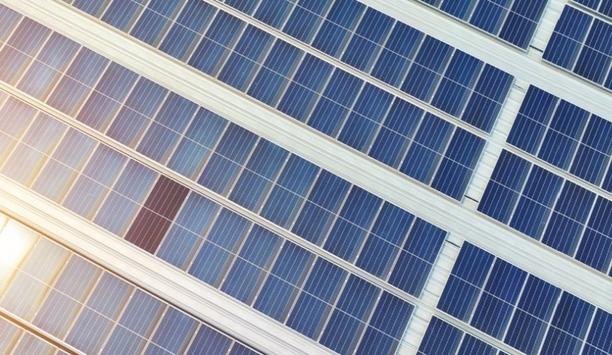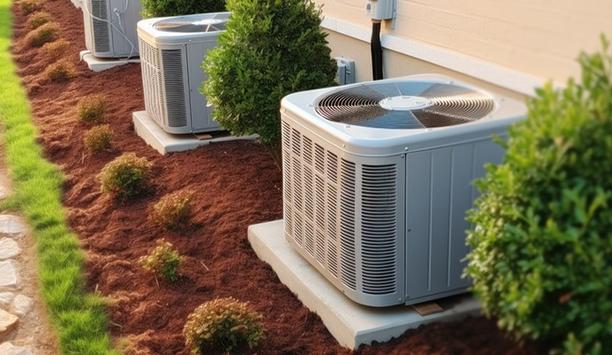Recently, nine states pledged to accelerate the transition to clean buildings in their states, including a goal of deploying heat pumps to make up 65% of residential heating, cooling, and water heating by 2030.
California, Colorado, Maine, Maryland, Massachusetts, New Jersey, New York, Oregon, and Rhode Island signed a memorandum of understanding in February outlining their collective efforts to accelerate the deployment of clean technologies such as heat pumps in new and existing homes.
Benefits of heat pumps
Fifteen percent of the world’s greenhouse gas emissions come from the heating and cooling of buildings and homes, and accelerating the use of heat pumps advances the goal of a cleaner, healthier environment.
“The door is closing on reasons to shy away from heat pumps because the technology is here, and the incentives and support from government programs are on the rise,” says Katie Davis, VP of Engineering and Technology at Trane Residential. “There is no better time than now to make the change for a more sustainable future.”
portfolio of residential heat pumps
The new portfolio yields an emissions reduction of over 35% (compared to 2019), and the new 15 SEER heat pump
Beginning this month, Trane Residential launches its new portfolio of residential heat pumps that achieve new levels of emissions reduction. The new portfolio yields an emissions reduction of over 35% (compared to 2019), and the new 15 SEER heat pump will meet Energy Star requirements.
“We saw the change in refrigerant regulation as an opportunity to propel us forward in technology toward a better environment,” says Davis.
Heat pump technology
Heat pump technology has been around since the mid-1800s, and it has evolved significantly since that time. Within the last 10 years, improvements have been made in efficiency, in both the heating and cooling cycles.
The use of vapor injection technology in the heating cycle has greatly improved the capacity and efficiency of heating with heat pumps.
Comfort mode
Comfort mode provides a level of comfort similar to that of fossil fuel-burning furnaces
Trane heat pumps also can deliver very warm air at the register through Comfort mode, which provides a level of comfort similar to that of fossil fuel-burning furnaces, says Davis.
Homeowners who prefer furnaces due to the temperature of the discharge air have similar capabilities with Trane heat pumps.
Sustainability and efficiency
Trane Technologies seeks to challenge what’s possible for a sustainable world, says Davis. “Sustainability is the foundation of how we design our products for the future of HVAC,” she says.
Improvements in the efficiency of Trane Heat Pumps have a direct correlation to reduced emissions, which translates to energy savings on a homeowner’s utility bill.
Trane Link systems
Other factors that assist in driving the transition to the electrification of heating are utility rebates
The Trane Link systems provide up to an additional 5% energy savings to the homeowner using smart technology that efficiently manages the home load environment. Other factors that assist in driving the transition to the electrification of heating are utility rebates and a program that assists homeowners in making the shift.
Of course, "indirect emissions" and the greening of the grid have an impact on emissions as the industry moves toward the use of heat pumps and away from fossil fuel-burning systems.
emissions reduction by design
Trane is achieving industry-pioneering emissions reduction by design, and as the grid becomes greener, it will accelerate the impact the Trane portfolio will have on the industry and the environment, says Davis.
“At Trane, we utilize a multi-variable approach to reducing emissions in our product portfolio,” says Davis. “While a greener grid can help to accelerate the reduction in emissions, our systems utilize smart technology, lower global warming potential refrigerants, and improved efficiency in heating design to achieve industry-pioneering emissions reduction for our systems.”
alternative energy sources
When designing for sustainability, several levers can be pulled to yield the best results
Heat pumps play a role in encouraging more efficient energy sources. HVAC accounts for over 40% of the energy usage in a home. There is an opportunity for the development of capabilities in alternative energy sources for heating and cooling as well as improved energy management for the home.
When designing for sustainability, several levers can be pulled to yield the best results. One of those levers is related to digital controls and smart systems.
Trane Link Variable Speed
Trane Link Variable Speed Systems provide over 700 speeds to provide a pinpoint match to a homeowner’s load demand in a home. The system provides temperature control within 0.5 degrees F, humidity control to the exact setpoint defined by the homeowner, and provides up to 5% energy savings on utility bills.
By utilizing the digital technology within the control system, the heat pump manages comfort as well as efficiency to provide the best for the homeowner and the environment. For dealers, Trane provides Dealer Diagnostics that give precise information on runtime and system performance, in real time, to ensure the most optimal operating parameters for the best system performance and efficiency.
heat pump heating capability
Two obstacles are cost and the customer perception of heat pump heating capability
Two obstacles remain in the transition journey. They are cost and the customer perception of heat pump heating capability. “As we accelerate this transition, the time is now for utilities and government programs to step up and assist homeowners in electrification of heating,” says Davis.
Inflation Reduction Act (IRA) funding is a step toward this assistance, but more is needed across the industry to ensure a rapid transition to cleaner equipment.
Consumer concerns
In addition to cost, homeowners have not been properly educated on the advancement of heat pump technology over the last decade, and heating with heat pumps has improved significantly. “The cost to convert from furnaces to heat pumps can be prohibitive, but with government incentives, like the IRA rebates, this becomes less of an issue,” says Davis.
“Other concerns from consumers are energy bills and the concern that energy costs will rise with the use of heat pumps. While it is true that electric energy bills may rise, homeowners should see a reduced cost of use of other energy sources,” says Davis. “In the end, we move closer to parity.”






































